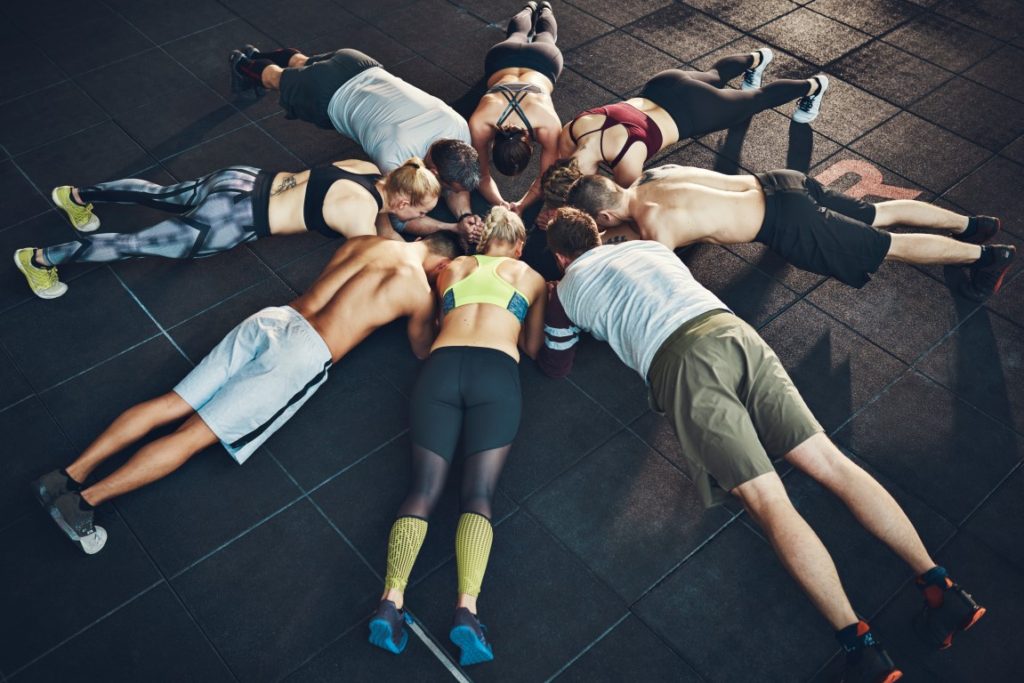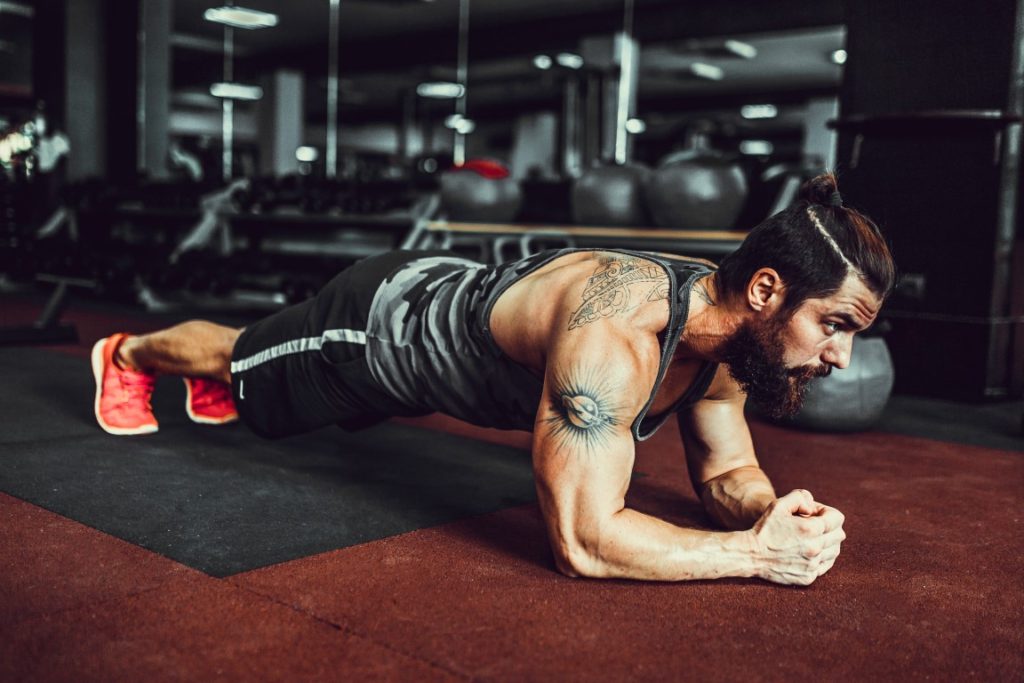The Plank
The plank is a fantastic isometric hold that doesn’t require much space at all.
The plank has literally an endless array of variations – from one arm, one leg planks to stability ball planks, planks with additional resistance… you name it there’s always a challenging, engaging spin to throw in the works to make your planks that much harder.
Movement: Isolation
Targets: Abdominals
Optional: Yoga mat
How To Perform The Plank Correctly
Lay down facing the floor.
Place your palms under your shoulders and place your forearms on the ground.
Lift your hips and support your body via your forearms.
Your head, back and feet should all form a straight line (look down or slightly in front to ensure your neck remains in a neutral position).
Hold the plank for upwards of 1 minute per rep.
Tips
- Squeeze your glutes to stabilize the bottom half of your body.
- Avoid locking your knees by keeping them slightly bent.
- Actively contract your shoulder blades to pack the shoulders down in relation to your torso.
- Tighten your abdominals by drawing your belly button toward your spine.
Plank Variations
Side Plank
Lay sideways, supporting your torso with one forearm with your feet side by side together with extended legs.
Lift your hips and support your body via your forearms.
Your head, back and feet should all form a straight line.
Hold the plank for upwards of 1 minute per rep.
Swap sides and repeat.
Common Ab Training/Plank Mistakes
Training Abs Too Frequently
Abdominal training is a lot easier than many make it out to be.
You do not need to train abs every single day, in fact if you’re training them hard it’s detrimental to progress.
You do not need to dedicate entire workouts to your abs.
Like all other muscle groups, the abs require time to recover after they’ve been hit hard.
I recommend throwing in a 15 minute ab workout 2 – 3 times per week at the end of your regular workout… do not train abs first before you go into heavy squats or deadlifts as your core will be fatigued and will become the weak link in your exercises.
Not Venturing Beyond The Sit-Up
The sit-up is without a doubt the most common ab exercise, chances are when you think of abs you instantly think of sit-ups, and lots of them.
I personally find 2 issues with the sit-up and cannot remember the last time I incorporated sit-ups into my ab workout regime.
The sit-up places the lower back in a compromised position when performed with bad form.
The sit-up does not work the entire abdominal region, i.e. it neglects the lower abdominals.
Thinking Ab Exercises Will Get You Abs
The cliche saying, ‘abs are made in the kitchen’ is correct.
Six pack abs are the result of low body fat, for men the abs start popping around 10% body fat and continue to get more defined as you delve down into the single digit body fat range. For women, abs are visible around 15% body fat.
In order to burn fat and get down into this low body fat range we need to subject our body to a calorie deficit (i.e. be consuming less calories per 24 hour basis than our body needs to maintain its current weight). Without a caloric deficit fat loss is literally impossible.
A caloric deficit is induced via a combination of diet and exercise, ab exercises can assist you in burning calories to place you in a deficit to lose fat… but if you’re eating too much there’s no colossal number of sit-ups, leg raises or planks that’ll get you the six pack abs you desire.
Similar & Substitute Exercises
- Side Planks
- Hanging Leg Raises
- Cable Crunches

